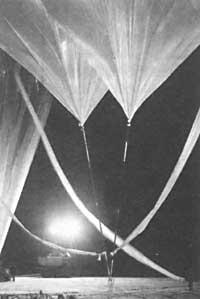Air conditioning without pollution
2000/08/01 Elhuyar Zientzia Iturria: Elhuyar aldizkaria
Traditional air conditioning machines have used CFC or fluorocarbons. We know, however, that these gases are very harmful to the ozone layer. Every time CFC leaks into the atmosphere we know that damage to the stratospheric ozone layer occurs.
The Food Refrigeration and Process Engeneering Research Center (FRPERC) and the Building Research Establishment of the University of Bristol in the UK have prepared a new pollution-free air conditioning equipment. They use air and not CFC as a fluid to transport heat.
These air conditioning teams work by compressing and expanding the gas. When the gas is compressed, the temperature increases and, on the contrary, when the pressure drops, the temperature drops to the same level. The same thing happens to the air.
The air conditioning equipment has two heat exchangers. These distinguish, on the one hand, the narrows that prevent the free circulation of air and, on the other, the turbine compressors used in the aerospace industry. Between both exchangers a large pressure difference is generated. The air leaves heat in the high pressure exchanger and the low pressure exchanger cools. This cycle is, logically, equivalent to the classic air conditioning equipment, but here there are no phase changes of the fluid between both exchangers (liquid to gas and vice versa). The whole machine works in the gas phase and in the CFC apparatus the hot exchanger worked in the liquid phase.
As has been proven in the tests, through this procedure, the equipment obtains at the same time 80 °C of hot water and 6 °C of cold water, it can be used directly in the buildings.

Gai honi buruzko eduki gehiago
Elhuyarrek garatutako teknologia





